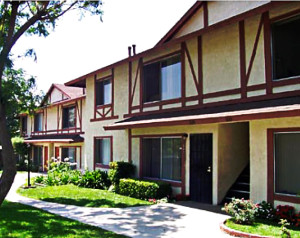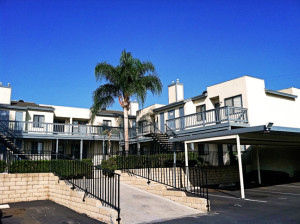One of The Biggest Mistakes Apartment Owner or Investors Make! Why You Should NOT Rely On Capitalization or Cap Rates when evaluating a multi-family purchase
Visit RobCastroBroker.com for more details
Don’t make the mistake I see new and seasoned investors make on a regular basis. A Capitalization Rate or “Cap Rate” is one of the most popular ways apartment investors quickly analyze deals. When an investor is initially evaluating a purchase one of the first things he or she typically asks is “what the cap rate?” I have always found this odd because the cap rate is a figure that can easily be manipulated to look much better than it really is.
Net Operating Income (NOI) / Price = Cap Rate
You can calculate based on the list / asking price, the price you are offering as a buyer, the sold price of a property, etc. This is up to you how you want to calculate.
For example:
You are evaluating a 10 unit apartment complex to purchase. The asking price is $1,250,000 and the NOI is $100,000 per year.
$100,000 / $1,250,000 = an 8% Cap Rate based on the asking price. In some markets this is extremely attractive to investors and in other markets it needs to be much higher get excited about, it is all relative.
If you offer low on this same building, negotiate back and forth and ultimately come to a purchase price of $1,050,000 what is the cap rate now based on the negotiated purchase price?
$100,000 NOI (that didn’t change) / $1,050,000 = 9.5% Cap Rate which is considerably more attractive. Think about it, the difference between an 8% cap and a 9.5% cap in this example is buying a building that generates the same income ($100,000 per year) but at a significant difference of $200,000 in the price.
Don’t get me wrong Cap Rates are an excellent way of evaluating an apartment building purchase IF you have all the real, current, and accurate data available. That is the key point “having all the real, current, and accurate data available” to calculate. You might be thinking, “what does he mean? It sounds pretty simple, just take the net income and divide it by the price and it gives you the cap rate.” Yes this is true but how do you determine what the real and accurate “Net Operating Income” is? This is where a misleading or dishonest agent, broker, or seller can very easily trick or fool an inexperienced apartment buyer when using a cap rate calculation.
To determine the true and accurate Net Operating Income or NOI of an apartment building it takes about 7 steps and you must use accurate data.
Below are the steps one must take in order to calculate an precise NOI:
Hypothetical Property Valued At $1,500,000
Step 1 – What’s the buildings monthly rental income fully occupied? $12,000
*If it’s a 12 unit building and each unit brings in $1,000 / Mo
Step 2 – Laundry Income or any other income monthly? $200
Step 3 – What’s the Annual Gross Scheduled Income (or GSI)? $146,400
(Step 1 & 2 added together X’s 12 month in the year)
Step 4 – Then you must account for Vacancy Rate, we will use a 5%
“vacancy factor.” That means 5% of the GSI. $7,320
(True vacancy rate varies by location)
Step 5 – The “Gross Operating Income of GOI” is the GSI less Vacancy $139,080
Step 6 – Total Annual Operating Expenses $37,466
Below is an example of a list of typical expenses, some
buildings may have more or less.
Annualized Expenses
New Property Taxes (1.1% of assessed $1.5M value) $16,500
Property Insurance $ 2,400
Water / Sewer $ 2,700
Trash Disposal Tenants Pay
Landscaping / Gardener $ 960
Electricity / Power $ 1,200
Gas $ 1,380
Pool Service $ 600
Pest Control $ 480
Property Management (5% of GOI) $ 6,854
Maintenance Reserve (3% of GSI) $ 4,392
Total Annual Operating Expenses $37,466
Step 7 – Calculating “Net Operating Income” $101,614
GOI – Total Annual Expenses = NOI
So it took 7 detailed steps and many calculations to reach the actual true and accurate NOI of this hypothetical / example property. I am sure you can now see how a misleading broker, agent, or seller could possibly “fudge” some of these numbers in their favor to make the property and cap rate look more favorable or attractive than it really is.
Think about it:
What if just the vacancy rate is reported lower than it actually is?
There are dozens of expenses when operating a multi-family apartment building, what if some are reported lower than they really actually are?
What if the rents or laundry income is reported higher than it really is?
Any one of these can greatly affect a cap rate calculation. As I mentioned above a cap rate is an excellent key indicator to use IF you have all the actual/real data to use when calculating. If you do I recommend using a cap rate to evaluate your purchases. However, if you don’t have all the actual/real numbers or if an agent, broker, or seller is using “estimated or proforma numbers” than a cap rate is really not worth using at all, in that case you can’t rely on it what so ever.
To get more information on the buying, selling, or investing in multi-family apartment buildings, call Rob Castro at (949) 922-0393 or visit https://www.robcastrobroker.com/


